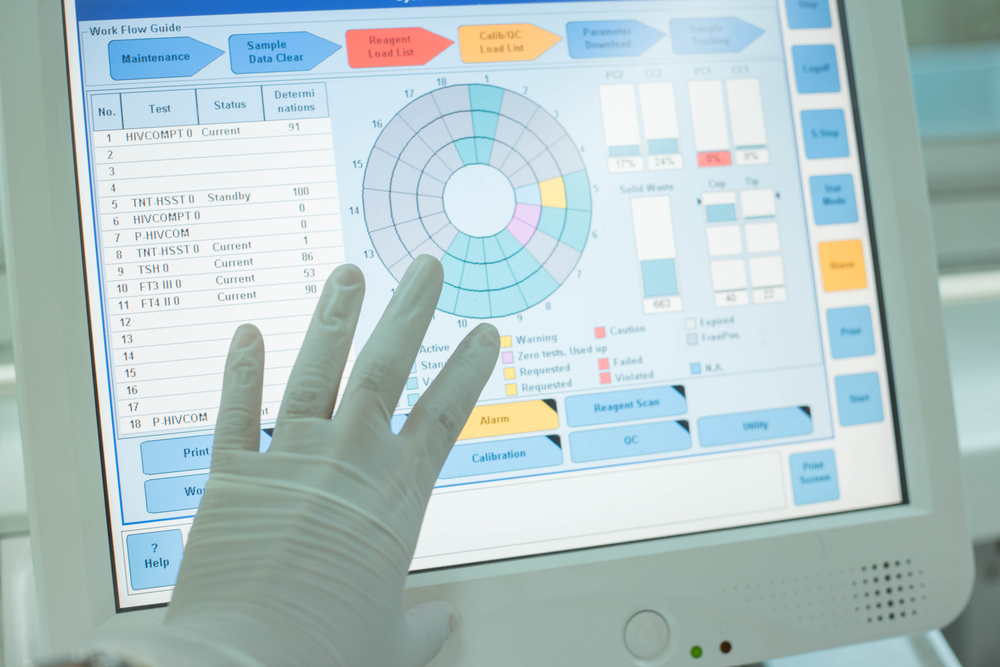
Analytical vs Diagnostic Sensitivity and Specificity
Written by: UK NEQAS IIA, published on: 12 Jul 2024

The inaccurate use of 'sensitivity' and 'specificity' can lead to confusion when interpreting sophisticated laboratory test results for diagnostics. An assay's analytical sensitivity and specificity differ from its clinical diagnostic sensitivity and specificity.
Therefore, the terms 'sensitivity' and 'specificity' should always be qualified with their appropriate adjectives, as the meanings differ significantly. In this blog, we’ll discuss analytical vs diagnostic sensitivity and specificity in more depth, and outline the differences between them.
Diagnostic Sensitivity and Specificity
Diagnostic sensitivity indicates a test's ability to detect a disease. This high sensitivity ensures that many individuals who are genuinely ill will receive a positive result, which is crucial in scenarios like detecting coronavirus. The higher the sensitivity of the test is, the fewer false negative results it produces.
Whereas, diagnostic specificity refers to the percentage of people who do not actually have the disease and are correctly identified as negative by the test. A diagnostic test with high specificity, therefore, has few false positives, meaning that those who test positive are mostly truly positive.
Analytical Sensitivity and Specificity
Analytical sensitivity is the smallest amount of a substance in a sample that an assay can accurately measure. Analytical sensitivity is evaluated in controlled laboratory conditions, and primarily assesses the technical performance of the assay itself, including factors such as accuracy and precision.
Analytical specificity, on the other hand, refers to an assay's ability to distinguish and measure a particular analyte in a sample, excluding others. There are two components to analytical specificity, which are:
Cross Reactivity - This can happen between antigens when an antibody directed against one specific antigen is successful in binding with another, different antigen
Interference - This can happen when a sample contains endogenous substances like medications or exogenous inhibitory substances such as hand cream and powdered gloves. These substances can inhibit the antibody from binding to the intended antigen. This can lead to the cause of a clinically significant difference in the assay result, due to another component or property of the sample, potentially leading to a false negative result.
Analytical vs Diagnostic Sensitivity
While both analytical sensitivity and diagnostic sensitivity are crucial aspects of diagnostic testing, they address different aspects of test performance: technical detection capability versus diagnostic accuracy in real-world scenarios.
Diagnostic sensitivity refers to the ability of an assay to accurately identify individuals with a disease. While analytical sensitivity, which is the capacity to detect very small quantities of an analyte, contributes to diagnostic sensitivity, high analytical sensitivity alone does not necessarily ensure effective diagnostic sensitivity.
It’s therefore important to recognise that the two terms are very different. Analytical sensitivity reveals information about the performance of your assay in the tube, while diagnostic sensitivity is telling you about how your assay performs on a given population. Because of this, it’s vital to attach the terms ‘analytical’ or ‘diagnostic’ to the term sensitivity when describing your assay.
Analytical vs Diagnostic Specificity
While the term analytical specificity typically describes the extent of cross-reactivity in a test system, the diagnostic sensitivity of a test reflects the percentage of samples correctly identified as positive by the test. Analytical specificity refers to the ability of an assay to accurately measure a particular analyte in a sample, distinguishing it from others present.
On the other hand, diagnostic specificity refers to the ability of a test to correctly identify the absence of a disease or condition. Diagnostic specificity values are linked to true negatives and false positives in testing scenarios.
Final Thoughts
We’ve explored analytical vs diagnostic sensitivity and specificity, and outlined the differences between the two. Sensitivity and specificity are critical metrics in the evaluation of diagnostic tests and medical screening tools, and can help in understanding the test's accuracy and reliability.
At UK NEQAS IIA, we provide External Quality Testing for laboratories worldwide, evaluating their performance quality and increasing trust in patient test outcomes. We provide reassurance to both staff and clients by affirming that the tests conducted in their laboratory produce precise and reliable results. Contact us today for more information, and visit our Digital Academy to access our wide range of resources.

